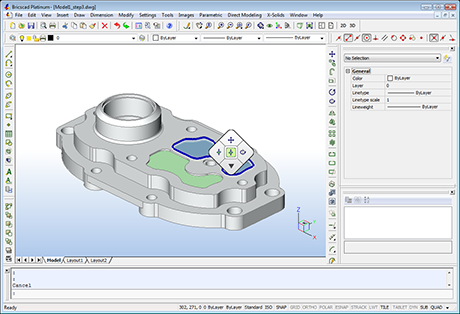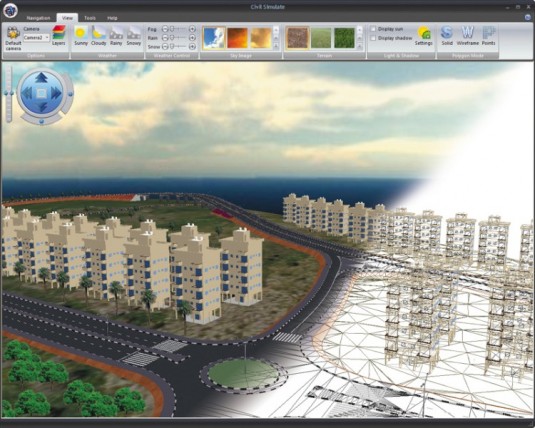From its early days of hoping for a “black zero” at the end of the year, Bricsys has become an important supplier of CAD technology in Europe and Asia.
Most companies competing against Autodesk realized years ago there’s no money in going against the CAD giant head-to-head. Instead, they carve out a niche. Add-ons for 3ds max, CAD utilities for HVAC, that sort of thing. For the past 10 years Bricsys of Ghent, Belgium has slowly grown to become a recognized name in CAD—primarily outside the US—by creating a low-cost 2D/3D design platform as an alternative to AutoCAD.

The original plan in 2001 was simply to make a low-cost AutoCAD clone, to undercut Autodesk in Europe where its product prices have been routinely higher than in the US. The Bricsys of today looks much different. The flagship Bricscad has been completely rewritten and offers some important features not found in AutoCAD, there is a project management solution (Vondle) that is the equal of anything in AEC, and there is a growing band of developers in places like Poland, Russia, and Turkey creating localized design solutions based on Bricscad. The third-party development has become the most important part of Bricsys business, and is at the heart of its strategy going forward.
The Bricsys of today is 60 full-time software engineers creating products in 17 languages sold in 70 countries with localized day-to-day support. Having started with the IntelliCAD Technology Consortium, Bricsys switched to the Open Design Alliance in 2008 when the ITC seems to be imploding; Bricscad V12 is based on the current ODA Teigha platform. There are now more than 200 commercial applications from third-party vendors, mostly in AEC and GIS; some are as robust as anything from Autodesk or Bentley. Despite the growth, the USA remains among Bricsys’ weakest markets.
At the recent Bricscad Developers Conference in Brussels, the senior management gathered with its developer clients, a few large end-user organizations, and three members of the global CAD press to summarize the past 10 years, share some intriguing new software features and a business re-organization, and to cast a vision for what Bricsys will do in the years ahead.
The revolution can wait

In explaining his vision for Bricsys, CEO Eric de Keyser asks conference attendees to imagine a revolutionary CAD system rising up to challenge the industry standard. “What is the biggest hurdle,” he asked, “technology or marketing?” Today at least 28 CAD companies sell products using the DWG file format; PDF is the second-most popular file format supported. “DWG is all over the place.” It is not the time, de Keyser argued, to try to overthrow the established standard, but to support it and help it expand. “The application community needs stability, not a new technology.”
The stability de Keyser seeks does not come by ignoring current trends. The rising trend of “apps” will affect all CAD vendors; de Keyser sees it as an opportunity to enrich existing applications with new functionality, giving end users mix-and-match feature upgrades at a lower cost. “We have to help our third-party developers make this transition.” Another important new trend Bricsys says it won’t ignore is cloud storage and computing.
A robust 2D/3D CAD engine
Bricscad V12, now shipping, contains several new features that set it apart from most AutoCAD clones. It is the foundational technology the growing army of Bricsys third-party developers—many in developing economies—will use to create a wide variety of new applications based on DWG technology.
Key among new features:
2D and 3D constraint solvers—Users may set limits on specific 2D drafting elements such as Perpendicular, Parallel, and Tangent, and add 3D constraints to edges, faces, and several types of 3D solids;
3D Direct Modeling—A breakthrough technology for an AutoCAD clone;
The “Quad” cursor menu—Provided as an alternative to grip-editing of entities, it offers more drafting options with fewer keystrokes;
3D design intent detection—Behind-the-scenes detection to guard against over-constrained models.

Playing the Ledas card
The same year as Bricsys started with a management buyout of the former Bricsnet, a small team of researchers from the Russian Research Institute of Artificial Intelligence in Novosibirsk started a software development firm. They quickly found a market for CAD add-ins, with custom development work for Dassault Systèmes on Catia and a plug-in for Google SketchUp. Today the components created by Ledas compete head-to-head with the D-Cubed division of Siemens PLM Software, which also creates and sells component technology to CAD vendors.
Bricsys started using Ledas technology in 2008; today Ledas is the source of such cutting-edge features in Bricscad as the constraint solvers and 3D direct modeling. As the working relationship between Bricsys and Ledas matured, both realized the strengths and weaknesses of their partner. Ledas had become more interested in services and consulting, and Bricsys more interested in software development. So at the conference the two announced that Bricsys would acquire the Ledas intellectual property portfolio. Now Bricsys owns the source code to several component products including the 2D and 3D geometric constraint solvers, Driving Dimensions, and RhinoWorks. Just as Ledas before it, Bricsys will now sell and support these technologies as used by other CAD companies.
“This changes our company,” says Bricsys CEO de Keyser. “We have been in the upper layer of the alternatives [to AutoCAD]; now we are beyond that. It is a big step for us.”

A platform for indigenous CAD
Bricsys has successfully carved itself a niche, providing a foundational CAD platform from which developers in the so-called emerging economies can create products that will make a civil engineer in Poland or a mechanical drafter in Turkey feel at home. As a reference point, in the last four quarters Autodesk has derived from 16% to 23% of its revenue from countries it identifies as “emerging economies.”
Bricscad is as powerful, in many ways, as AutoCAD but sells for less than AutoCAD LT. New marketing programs are in place to promote Bricscad to the educational market. The product is available—complete with the robust APIs—in Windows and Linux versions. Linux is especially important in many Eastern European and Central Asian markets.
Bricsys CEO de Keyser says that in the early days, the goal at the end of the year was “a black zero;” i.e., break even without losing money. Those days are clearly in the past. Expect Bricsys to continue to grow, possibly even go public in the next three years, subject to market conditions.





